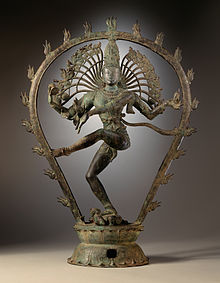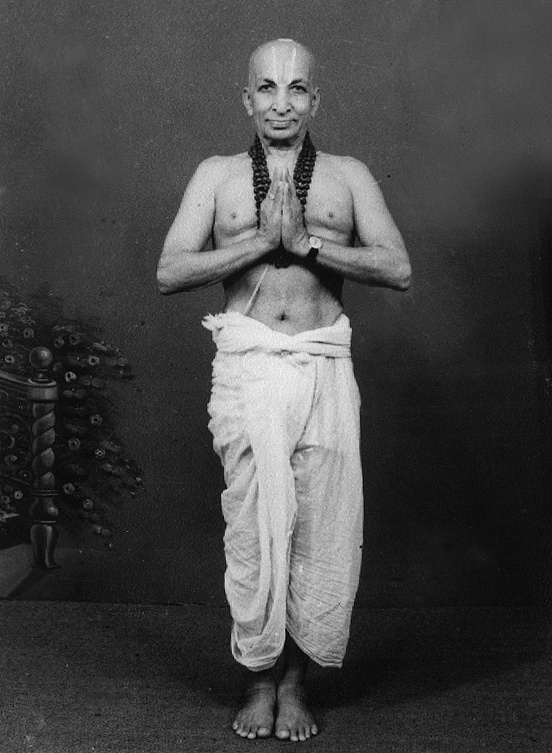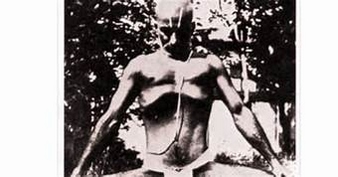Yoga has its roots thousands of years ago, and is not only confined to India.
The original name of yoga in India was guna, which meant ‘secret’. This word guna we find in many other countries under a slightly different form: guna-guna in Indonesia, which meant ‘magic’, huna in Hawai, with the same meaning. The Hawaiian language and religion are also called kahuna.
In Europe we find the runes, which was a secret language of the Celts, and also of the Romans.
What was this secret?
In its worst form it was a way of gaining power over someone or something, usually to harm. This is the aim of ‘black magic’.
It was believed that the human body has unimaginable power locked away inside, which could be released by words, postures, exercises, dance forms and so forth. Thus we find in many countries evidence of dance forms or movements which served to unlock this power.
This power was intimately connected with nature. Archaeologists have found statues of a figure seated in the so-called lotus position in Harappa and Mohenjo-Daro (Northern India), Ireland and other countries. These ancient statues all wore horns on their heads. The horns are the symbolism of the bull, of masculinity and of power. The figure found in India was called Pasupati Nath, which means the father of the animals. Later on this figure became the god Shiva.
This original god of nature, of animals, slowly evolved into something more sophisticated.
Pasupati Nath eventually became Lord Shiva who, in the course of time, became part of a trinity, called Trimurti (tri means three and murti means figure, face): Brahma, Shiva a Vishnu.


Pasupatti Trimurti: Brahma, Vishnu and Shiva
Brahma is the creator god, Vishu he who sustains creation, and Shiva who, at the end of a kalpa or an era, will destroy creation with his famous dance, the tandava, in which creation is burnt and destroyed.
Shiva dancing the Tandava, the dance of destruction

How do we arrive from here at Natha Yoga?
There are many legends regarding the origin of yoga.
Here is one well-known legend:
Shiva, as Lord of Destruction, was also lord of yoga, but he never taught humans. At one point, however, his wife, Parvati (which means mountain) begged him to teach yoga to her. He was reluctant, but in the end agreed, but on condition that they went to the beach, where no people could hear him. So Shiva explained yoga to his wife Parvati, unaware that in the water there was a fish listening.
In the end he became aware of this fish, took him out of the water and turned him into a human being, called from then on : Matsyendra Nath. Matsya means fish and indra means king.


Matsyendra Natha Goraksa Natha
According to Wikipedia:
<<<Matsyendranātha (early 10th century) was a saint and yogi in a number of Buddhist and Hindu traditions.
He is traditionally considered the revivalist of hatha yoga as well as the author of some of its earliest texts.
He is also seen as the founder of the Natha Sampradaya, having received the teachings from Shiva.
He is considered the guru of Gorakshanath, another important figure in early Hatha yoga.
He is revered by both Hindus and Buddhists and is sometimes regarded as an incarnation of Avalokiteśvara, the Buddha of compassion.>>>
The legend of Matsyendra Natha and Goraksa Natha:
Matsyendra Natha became a great yogi and the first teacher of the Natha lineage, but after a while he desired to have a disciple-son, so he went to some villages to find a suitable boy to teach, but found none.
At one point a woman came to him, complaining that she could not bear children, and asked him to give her a cure. So gave her some medicine, with the promise that after one year he would come back to claim the baby.
The woman did not believe him, and threw the medicine away into the food of the cow, who, after a while, gave birth to a calf.
When Matsyendra Nath came back after a year, the woman told him what she had done, that she had thrown away the medicine, and that the cow had given birth to a calf.
Thus Matsyendra took the calf and transformed him into a man, called Goraksa Nath (which means born from a cow). He was the second of the Natha lineage.
According to Wikipedia:
<<<Gorakhnath (also known as Goraksanath,[3] c. early 11th century) was a Hindu yogi, saint who was the influential founder of the Nath Hindu monastic movement in India. He is considered as one of the two notable disciples of Matsyendranath. >>>
Gorakhnath is considered a Maha-yogi (or great yogi) in the Hindu tradition. He did not emphasise a specific metaphysical theory or a particular Truth, but emphasised that the search for Truth and the spiritual life is a valuable and normal goal of man.
Gorakhnath championed Yoga, spiritual discipline and an ethical life of self-determination as a means to reaching samadhi and one’s own spiritual truths.
So according to this legend Matsyendra Nath became the human founder of yoga and he and Goraksa Nath had many disciples.
The last of the Natha lineage lived in the beginning of 1900 and was named Krishnamacarya. The modern gurus, Pathabi Jois, Desikacar, B.K.S Iyengar, Indra Devi, and others were the last to follow the Natha line.
Last of the Natha lineage Krishnamacarya.










